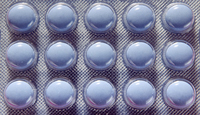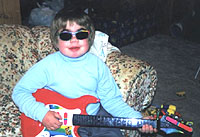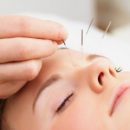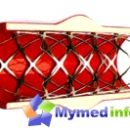What is the reason for the formation of Down syndrome. Risk of birth of children with Down syndrome. Detection of genetic pathology at an early stage of pregnancy.
Content
 Down syndrome — Chromosomal disease due to disruption of the number of outosomes (non-treat chromosomes). The disease is not hereditary, genetic disorders occur during the reproductive process. The probability of the birth of patients of children rises with age of parents. Currently, it is possible to detect pathology at an early stage of pregnancy.
Down syndrome — Chromosomal disease due to disruption of the number of outosomes (non-treat chromosomes). The disease is not hereditary, genetic disorders occur during the reproductive process. The probability of the birth of patients of children rises with age of parents. Currently, it is possible to detect pathology at an early stage of pregnancy.
Down syndrome (three chromosome trisamia) is one of the forms of human genomic pathology, in which there are 47 chromosomes in genotype at the norm — 46. Instead of two chromosomes, the 21st pairs are present three chromosomes (trisoma).
Causes of Down syndrome
Mechanism for the formation of genetic pathology
Pathology begins to develop in the embryonic period. The attached excess chromosome has a negative effect on the REST gene, which then provokes a number of changes in other genes governing the development of the body at the level of stem embryonic cells.
Options for pathological changes
Simple full trisoamia (non-healing option) is observed in 95% of patients, it is due to the chromosome with chromosomes during meyosis. 1% observed mosaicism — unnecessary chromosoma contain not all organism cells. In other cases, the syndrome can be caused by the translocation of the 21st chromosome, which arises as a result of the merger of the 21st chromosome center and another acrocentric chromosome.
Children with Down Syndrome
The probability of birth of a sick child
Down syndrome is observed in one case of 700 genera. This ratio does not depend on countries, climatic zones, races and social layers. Also does not affect the lifestyle of parents. Additional chromosome is a random result in the formation of a genital cell — Egg or spermatozoa — Either during the first division of the cell's new organism after fertilization. The ratio of girls and boys among newborns with pathology is 1: 1.
If one of one-time twins is sick, then the patients will inevitably turn out to be another. Different twins have such a pattern not observed. This fact once again confirms the chromosomal origin of the disease. However, Down syndrome is not a hereditary disease, a defective gene from generation is not transmitted to generation — Disorder occurs during reproductive process.
Factors that create the risk of the appearance of Down syndrome
The probability of the birth of sick children depends on the age of father and mother of the child and the degree of kinship of spouses. The age of mother has the greatest impact. For women up to 25 years old, the likelihood of the birth of a child with pathology is 1/1400, from 25 to 30 years — 1/1000, from 30 to 35 — 1/350. In 42, the risk increases to 1/60, and in 49 years probability is already 1/12. According to the results of some studies, the probability of birth of a sick child also depends on the age of grandmother on the maternal line. The older she was at the time of his daughter, the more likely the birth of sick grandchildren.
Treatment of Down syndrome
Currently, there are no effective drugs for the treatment of Down syndrome. At the development stage there are preparations based on the hormones of pituitary and thyroid gland.
Prevention of pathology
Pregnant women at the age of 35 years old are recommended to go through the procedure of amnicate — Analysis of the chromosomal composition of cells contained in the oily water waters. This method makes it possible to obtain accurate results about the child's genotype and in case of pathology detection — interrupt pregnancy. Currently, thanks to the prenartainment diagnostics, it was almost doubled to reduce the birth rate of patients — 1/1100.
Signs of Down syndrome
Reflection of genetic pathology on the appearance of the patient
For people with Down syndrome, the presence of a number of external signs is characteristic:
- «Flat face» — about 90%;
- Bess cut eye — 80%;
- Shorten Skull (Brakhicephalia) — 81%;
- Flat Zatil — 78%;
- short — 40%;
- Flat bridge — 52%;
- Short and wide neck, poorly developed earliest — 45%;
- Muscle Hypotension and Hypherming Sustaines — 80%;
- strabismus — 29%;
- Brushfield stains (pigment stains on the edge of the iris) — nineteen%;
- Arcoal Nybo — 58%;
- Tooth anomalies — 65%;
- furridge — fifty%;
- Short limbs — 70%;
- Brahimesenezofland (shortened fingers) — 70%;
- Curved Mysinets — 60%;
- transverse palm fold — 45%;
- KILEVIDE or VORONERK-shaped thoracic deformation — 27%.
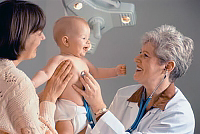 In connection with the special structure of the neb and low muscle tone, 65% of patients have been observed constantly open mouth. Characteristic features are a hoarse voice, low growth and mental retardation. IQ man with Down syndrome lies within 30-50.
In connection with the special structure of the neb and low muscle tone, 65% of patients have been observed constantly open mouth. Characteristic features are a hoarse voice, low growth and mental retardation. IQ man with Down syndrome lies within 30-50.
Accompanying illnesses
In 66% of children under the age of 8, cataract develops, congenital heart disease (40%), anomalies of the gastrointestinal tract (15%), epicindrome (8%) and congenital leukemia (8%). Patients with Down syndrome more resistant to cancer. Under the suggestion of scientists, 21 chromosome has the ability to impede the uncontrolled cell growth, and the third copy of the gene increases this ability.




